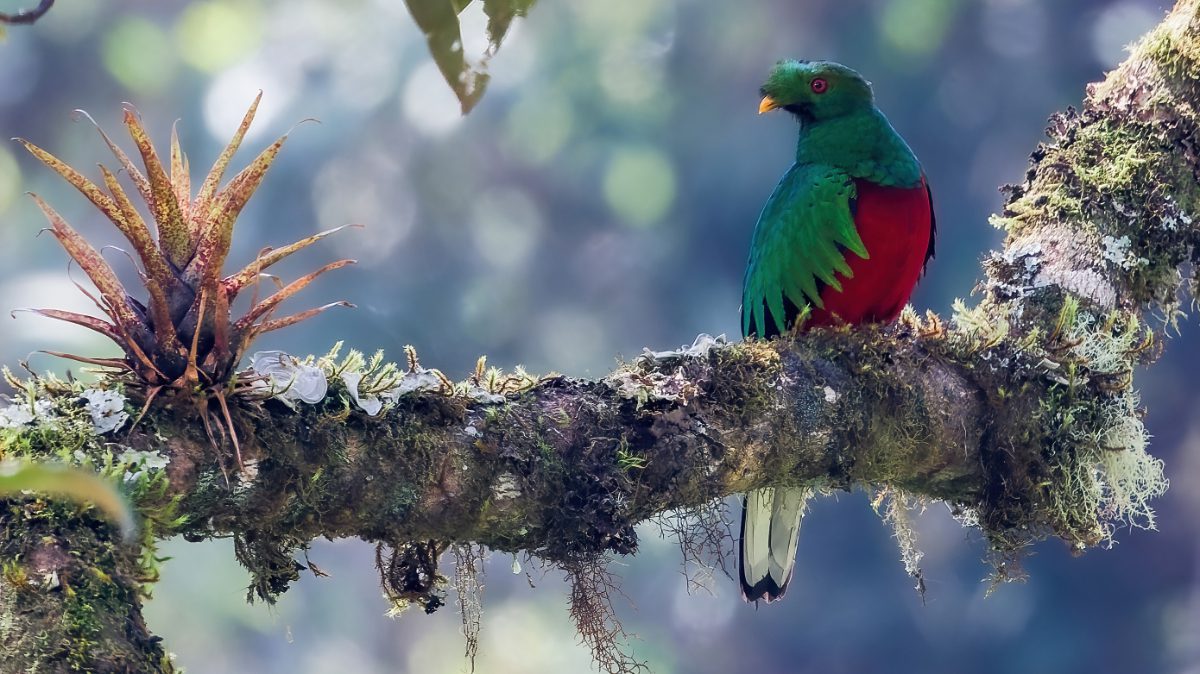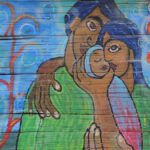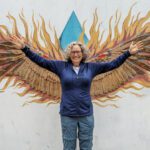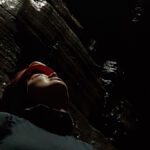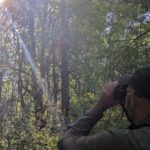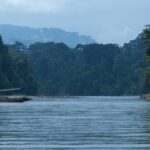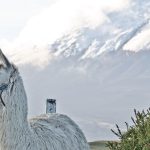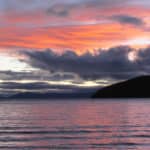Birding & Photography in Ecuador: West, East Slopes and/or Amazon
8, 12, or 15 Days
Small Group Tour
Andes – Cloud Forest & Paramos
Upper & Lower Amazon Basin
Experience the Wild Heart of Ecuador — One Bird at a Time
Ecuador is a land of vertical biodiversity — a nation where cloud forests cling to Andean mountainsides and Amazonian lagoons teem with life. With Ecuador Birding Tours, you can shape your experience based on how many of these extraordinary regions you want to explore:
8 Days: Focus exclusively on the West Slope Cloud Forests, home to dazzling hummingbirds, elusive Antpittas, and iconic species like the Andean Cock-of-the-Rock.
12 Days: Expand your journey to include both West and East Andean Slopes, doubling your chance to encounter regional endemics and spectacular scenery.
15 Days: Dive even deeper by adding the Amazon Lowlands, where canoe rides reveal parrots, toucans, and monkeys in a world teeming with life.
Each tour is carefully crafted by the team at Ecuador Birding Tours to go beyond checklists, weaving together rare wildlife encounters, local conservation stories, and access to private reserves and photography hides. With expert local guides and a small group capped at six travelers, you’ll enjoy personalized attention and the chance to connect with nature — and your place within it — in a whole new way.
West Slope Only, 8 Days: $2,200 per person, double occupancy
West and East Slopes, 12 Days: $3,500 per person, double occupancy
West and East Slopes and Lowland Amazon, 15 Days: $4,300 per person, double occupancy
Group size of 2-6 guests
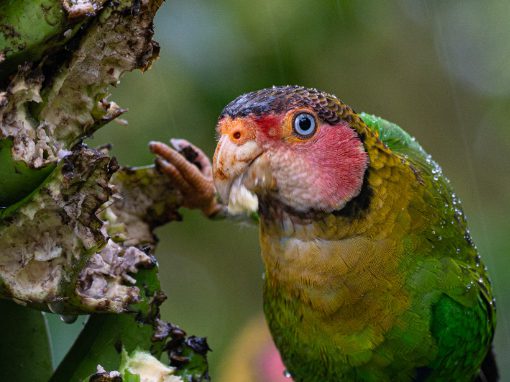



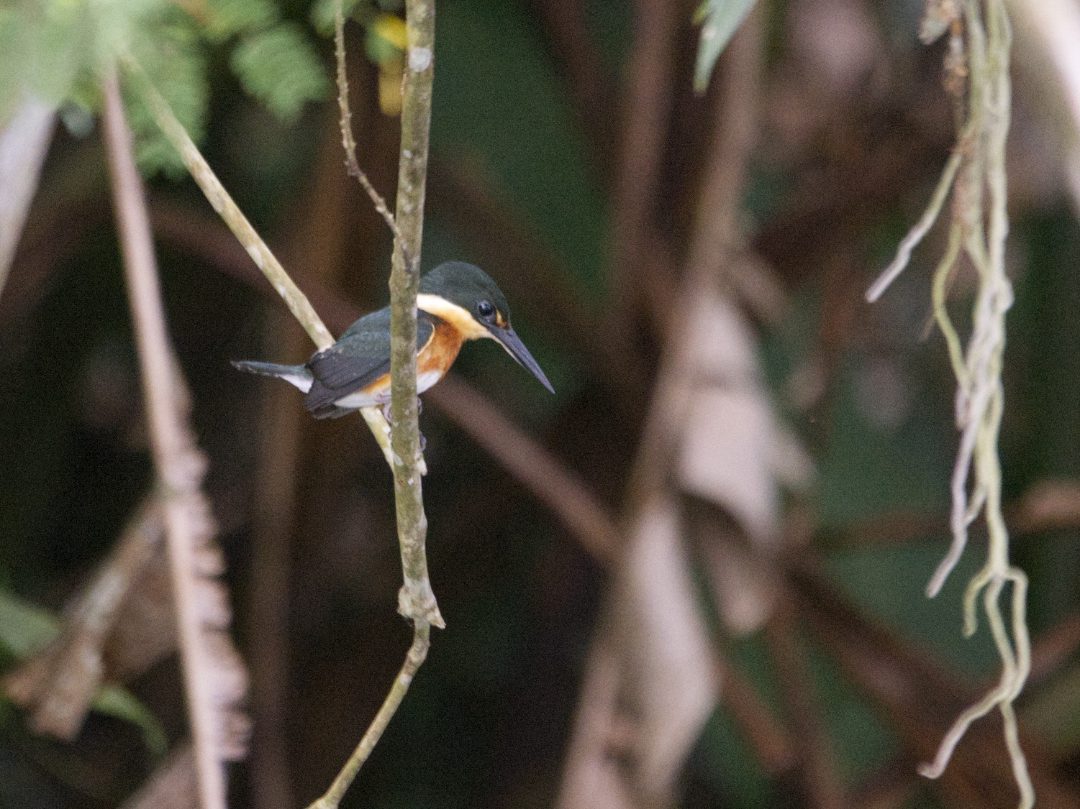




Ecuador Bird Tours
Ecuador Birds Tours is a premier local operator specializing in tailor-made birding and wildlife photography adventures across Ecuador’s most biodiverse regions. Their expertly crafted itineraries offer unparalleled opportunities to observe and photograph a vast array of bird species and other wildlife.
Whether you’re an avid birder, a nature photographer, or a traveler seeking immersive experiences, Ecuador Birds Tours offers journeys that are as enriching as they are unforgettable.
Diego Cruz, Founder of Ecuador Birds Tours, combines deep local knowledge with international experience. Diego, an Ecuadorian native, holds a B.S. in International Business Management from Elizabethtown College in Pennsylvania and an Executive MBA from Vrije Universiteit Amsterdam. Fluent in English, Spanish, and German, Diego brings over 20 years of experience in guiding and organizing birding tours throughout Ecuador. His passion for birding, wildlife photography, and conservation is evident in every tour he designs.
Under Diego’s leadership, the team at Ecuador Birds Tours is committed to providing exceptional service, personalized experiences, and sustainable tourism practices. Their dedication has earned them multiple TripAdvisor Travelers’ Choice Awards, reflecting consistent 5-star customer satisfaction.
Ask Diego A Question
At Not Your Average American, LLC, we serve as a travel broker, connecting you with trusted tourism providers in South America. While we don’t directly offer tours, we partner with local experts who handle all aspects of your travel. We earn a small commission on each sale, with bookings and payments processed through our partner via the WeTravel platform. If any issues arise, we are happy to assist with communication to ensure a smooth experience.
Itinerary: Birding & Photography in Ecuador: West, East Slopes and/or Amazon
Welcome to Quito!
Upon arrival at the Quito airport, you’ll be greeted with a private transfer to Hacienda Jimenita, a peaceful reserve just minutes from the city. Tucked into native forest and filled with birdsong, this charming ecolodge offers a relaxing setting to recover from travel and begin connecting with the landscapes of Ecuador.
Overnight: Hacienda Jimenita
Meals: Available on-site (not included)
Antisana Andean Condor Sanctuary – High Andes
We begin early today with a 6:30 AM departure from the lodge, heading to the Antisana Condor Observatory, located in the upper Andean valley. The day is focused on exploring the Antisana Reserve, one of Ecuador’s most striking highland regions. With panoramic views of a snow-capped volcano and windswept páramo, we’ll stop at key spots to observe Andean wildlife — including a chance to see the wild Andean Condor, Ecuadorian Hillstar, and a variety of hawks, hummingbirds, and highland specialties.
In the afternoon, we visit hummingbird feeders to search for spectacular species such as the Giant Hummingbird, Great Sapphirewing, and Shining Sunbeam.
Overnight: Hacienda Jimenita
Meals: Breakfast / Box Lunch / Dinner
Zuro Loma Reserve, Old Nono-Mindo Road & Alambi Hummingbird Paradise
We begin early, departing at 5:30 AM for a full day exploring the western foothills of the Andes. Our first stop is Zuro Loma Reserve, where specialized photography hides offer intimate views of elusive forest species like antpittas and the ocellated tapaculo.
From there, we travel along the Old Nono-Mindo Road, a legendary birding route, making strategic stops to observe highland and foothill species. In the afternoon, we visit the Alambi Hummingbird Garden, a stunning private reserve where over a dozen hummingbird species can often be seen in minutes.
We end the day in the Tandayapa Valley, checking into a cozy lodge surrounded by cloud forest.
Overnight: Guaycapi Lodge (Double Room Cabin)
Meals: Breakfast / Lunch / Dinner
Cock-of-the-Rock Lek & Bellavista Reserve
This morning we’ll visit a Cock-of-the-Rock lek, a dramatic gathering site where these brilliantly colored birds perform their courtship displays — a photographer’s dream and a deeply immersive wildlife experience.
From there, we’ll continue to the Bellavista Cloud Forest Reserve, exploring trails and feeders in search of tanagers, quails, barbets, and other Chocó endemics. The afternoon offers time for more birding or relaxed photography before returning to our lodge near Mindo.
Overnight: Sachatamia Lodge (Double Room Cabin)
Meals: Breakfast / Lunch / Dinner
Río Silanche Observation Tower, Woodpecker Feeders & Milpe Road
We descend into the subtropical lowlands of the West Slope to explore the Río Silanche Reserve, where an observation tower offers canopy-level views of forest birdlife. After a morning of birding, we’ll stop at dedicated woodpecker and hummingbird feeders, and continue exploring the famed Milpe Birding Road.
Expect a full day of varied habitats, lush scenery, and a growing bird list as we move through different elevation zones.
Overnight: Sachatamia Lodge
Meals: Breakfast / Lunch / Dinner
Long-wattled Umbrellabird Lek & Mindo Valley
Today’s highlight is a visit to the 23 de Junio Community Reserve, home to one of the few known leks of the rare Long-wattled Umbrellabird. We’ll spend the morning exploring the reserve and nearby roads, with a chance to see other lowland species including toucans and manakins.
In the afternoon, we return to Mindo Valley for continued exploration of forest trails, rivers, and reserves — all rich in birdlife and biodiversity.
Overnight: Sachatamia Lodge
Meals: Breakfast / Lunch / Dinner
Mashpi-Amagusa Reserve & Return to Quito
This morning we visit the Mashpi-Amagusa Reserve, a globally recognized biodiversity hotspot on the western slope. Nestled where the foothills meet the lowland forest, this reserve offers some of the best opportunities to see rare and localized species, especially Chocó endemics.
After a full morning of birding, we return to Quito in the afternoon and settle back into the peaceful surroundings of Hacienda Jimenita.
Overnight: Hacienda Jimenita
Meals: Breakfast / Lunch / Dinner
Papallacta Pass, Quijos Valley & San Isidro Reserve
Today we journey from the central valley into the eastern cloud forest, crossing the high-altitude Papallacta Pass, a dramatic paramo landscape that offers new birding opportunities at every turn. Along the way, we’ll explore Cuyuja Road and stop at the Rio Quijos Reserve, where feeders attract highland hummingbirds and other specialty species.
By afternoon, we arrive at the San Isidro Reserve, a renowned birding lodge in the lush eastern Andes. As evening falls, we’ll explore nearby trails or hides in hopes of observing nocturnal species like the Black-and-white Owl.
Overnight: San Isidro Lodge
Meals: Breakfast / Lunch / Dinner
Wayra Feeders, Upper Amazon Birding & Wild Sumaco
This morning we continue east, descending into the Upper Amazon Basin, where the humid forests begin to shift toward lowland jungle. Along the way, we visit the Wayra Reserve with their Hummingbird and Quail Feeders, with chances to see stunning species like the Paradise Tanager and, if we’re lucky, the Spangled Coquette.
After lunch, we visit the Hollín Waterfall Hummingbird Site, and in the afternoon, begin birding along the famed Wild Sumaco Road, which winds through diverse forest habitats on the slopes of the Andes.
Overnight: Wild Sumaco Lodge
Meals: Breakfast / Lunch / Dinner
Full Day at Wild Sumaco Reserve
We spend the full day exploring the Wild Sumaco Biological Reserve, one of Ecuador’s premier birding locations in the foothill rainforest zone. Morning birding around the lodge can yield sightings of wrens, antbirds, toucans, tanagers, and hummingbirds.
After breakfast, we’ll head into the reserve’s trail system, returning for lunch and continuing to bird in the afternoon. Species diversity here is incredibly rich, and the reserve’s remote setting offers a deeply immersive experience in the Amazonian foothills.
Overnight: Wild Sumaco Lodge
Meals: Breakfast / Lunch / Dinner
Cock-of-the-Rock (East) & Limoncocha by Canoe
Today we begin early with a visit to the Eastern Cock-of-the-Rock lek, a rare opportunity to compare this Andean icon across its geographic range. After birding the reserve trails, we continue our descent into the Amazon lowlands.
In the afternoon, we arrive at Limoncocha Biological Reserve, a tranquil wetland paradise. A private canoe excursion on the lagoon gives us a chance to spot wetland species, riverbank birds, and nocturnal wildlife as the forest comes alive at dusk. We end the day in the town of Shushufindi, deep in Ecuador’s Amazon.
Overnight: Grand Hotel Lago Shushufindi
Meals: Breakfast / Lunch / Dinner
Antpitta Feeders, El Ceibo Trail & Second Canoe Safari
This morning starts with close-range observation of species like the White-lored Antpitta and Black-banded Crake at specialty feeders near Limoncocha. These rare, shy forest dwellers offer thrilling sightings and excellent photo opportunities.
Later, we explore the El Ceibo Trail, a forest route through primary Amazonian habitat, where the dense understory and towering trees reveal an entirely new set of species. In the afternoon, we return to the Limoncocha Lagoon for a second private canoe safari, offering a different perspective of this extraordinary wetland.
Note: When in season, an optional visit to a nearby Harpy Eagle nest may be offered.
Overnight: Grand Hotel Lago Shushufindi
Meals: Breakfast / Lunch / Dinner
Yasuni National Park & Napo River Adventure
Today, we travel deeper into the Ecuadorian Amazon. A private canoe transfer takes us into Yasuni National Park, one of the most biodiverse places on the planet and home to a staggering range of birds, mammals, reptiles, and insects.
Highlights include:
- Anangu Observation Tower, offering canopy-level views of parrots and raptors
- Parrot Clay Licks, where up to eight parrot species — including Scarlet Macaws and Blue-and-yellow Macaws — gather in dazzling, noisy flocks
- A visit to a Kichwa community in Pilche, where we share a traditional lunch and gain insight into Amazonian life
In the late afternoon, we travel to Coca for overnight rest before beginning our return journey.
Overnight: Auca Hotel
Meals: Breakfast / Lunch / Dinner
Guango Reserve & Return to Quito
After breakfast, we begin our journey back to the Andes, climbing out of the lowlands and crossing through cloud forest once more. Along the way, we’ll stop at the Guango Reserve, a beloved site for high-elevation hummingbirds like the Sword-billed Hummingbird and Buff-tailed Coronet — and the chance to see the elusive Torrent Duck on the river.
We arrive full circle Hacienda Jimenita in the afternoon for a final night of rest and reflection, followed by a celebratory farewell dinner.
Overnight: Hacienda Jimenita
Meals: Breakfast / Lunch / Dinner
Transfer to Airport – Journey’s End
A private transfer to the airport is available 24/7, based on your flight schedule. We say goodbye after a remarkable two weeks immersed in the natural wonders and birdlife of Ecuador.
Meals: Available on-site (not included)
Included:
- Expert Bilingual Birding Guide
- Excellent Lodging
- All meals specified in the itinerary
- Roundtrip airport transfers (24/7, private service)
- Private ground transportation with professional driver
- Entry Fees for all reserves, observation tours, photo hides, and feeding stations.
- Private canoe excursions
- eBird Trip Report
Not Included:
- Tips for staff and guides
- Meals in Quito on arrival and departure dates
- Soft drinks nor alcoholic beverages
- Personal expenses like laundry
- Flights, international or national
- Travel Insurance
More Information About Birding & Photography in Ecuador: West, East Slopes and/or Amazon
Booking Your Flights
This tour begins and ends in Quito, Ecuador (UIO – Mariscal Sucre International Airport). Here are some flight-booking apps that may help:
Most flights from the U.S. arrive in the late evening (after 9:00 PM) and depart after 11:00 PM, which may not align smoothly with the group itinerary.
In this case, to ensure a more relaxed start, we recommend:
- Arriving one day early and requesting a rest day at Hacienda Jimenita through Ecuador Birding Tours. This allows time to adjust to altitude, recover from jet lag, and enjoy the lodge’s bird-rich surroundings.
- For return flights, consider arranging an airport drop-off on the evening of Day 14 to avoid spending all of Day 15 waiting at the lodge.
We’re happy to help coordinate these adjustments through our local partner.
Geography
Ecuador is one of the most geographically compact yet ecologically diverse countries in the world — and this tour is a journey through its most iconic natural zones. You’ll begin in the Andean highlands, where sweeping páramo landscapes and volcanic valleys give way to lush, mist-shrouded cloud forests. These montane ecosystems are rich with hummingbirds, orchids, waterfalls, and endemic species found nowhere else on Earth.
As the tour progresses, you’ll descend the eastern Andean slopes into the Upper and Lower Amazon Basin, one of the most biodiverse regions on the planet. Here, tropical lowland rainforest stretches endlessly in every direction, accessed by winding rivers and quiet lagoons. The shift in elevation — from 13,000 feet to under 1,000 — creates a rare opportunity to experience multiple ecological zones and climate patterns in a single trip.
This vertical journey through Ecuador reveals not only stunning landscapes and extraordinary birdlife, but also the ways that geography shapes culture, conservation, and daily life across the Andes and Amazon.
Climate
Ecuador’s dramatic elevation gradient gives rise to strikingly diverse climate zones, each influencing the rhythm of birdlife and shaping how we experience the natural world. This tour traverses everything from alpine grasslands to humid rainforest, so travelers should be prepared for a wide range of weather conditions throughout the journey.
West Slope
The western Andean slopes are home to cloud forests sustained by Pacific moisture. Temperatures here tend to be mild, ranging from the mid-50s to low 70s Fahrenheit (12–22°C), with frequent mist, fog, and light rain—particularly from January through April. Mornings are often the clearest and most active time for birding, while afternoons bring heavier cloud cover and the occasional downpour. High humidity is constant, supporting rich plant and bird diversity.
Páramo
At elevations above 11,000 feet (3,350 meters), the páramo is a cool, high-altitude ecosystem marked by wide-open skies, harsh winds, and extreme temperature shifts. Daytime highs may reach 59°F (15°C), but mornings can dip close to freezing. UV exposure is intense, and sudden changes in weather are common. While less biodiverse than the forests below, the páramo hosts unique highland species found nowhere else, and birding is best in the calm of early morning.
East Slope
As we descend the eastern Andes, the climate becomes wetter and warmer. The east slope receives more annual rainfall than the west, with the heaviest rains typically falling from March to May. Temperatures hover between 59–77°F (15–25°C), with high humidity and frequent mist, especially at dawn and dusk. The dense montane forests here are rich with birdlife, including tanager flocks, mixed-species foraging groups, and shy understory specialists that thrive in the thick vegetation.
Amazon Basin
At the lowest elevations of the tour, the Upper and Lower Amazon Basin is consistently hot and humid, with daytime temperatures ranging from 72–90°F (22–32°C). Rain is possible year-round, but more frequent from December to May. Mornings tend to be clearer, offering the best birding opportunities as canopy species become active and riverbank habitats come to life. Rainstorms are often intense but short-lived. Sturdy waterproof gear and breathable clothing are essential for comfort and mobility.
Pace
This is a dynamic and immersive birding journey designed for travelers who want to see as much as possible in one of the most biodiverse regions on Earth. To take full advantage of the incredible birdlife across multiple ecosystems, we keep a lively pace—starting early, moving efficiently between locations, and spending long, rewarding days in the field.
Early mornings are essential, as this is when bird activity peaks and the forest comes alive with sound and movement. Some days include multiple birding sessions, hikes along varied terrain, and transfers between key sites—all structured to give you access to the widest range of species and habitats possible.
This is not a slow or leisurely trip, but it is a highly productive one. Traveling with a group of like-minded birders creates a shared sense of purpose and excitement. With good energy, flexibility, and a spirit of adventure, you’ll come away with an exceptional list of sightings—and a deeper connection to Ecuador’s rich natural heritage.
When to go
This tour is scheduled during one of the most exciting times of year for birding in Ecuador. Departures take place in November and December 2025, and in October, November, and December 2026—right at the start of the austral migration, when bird activity surges across all elevations.
These months mark the arrival of migratory species from North America, adding to the already rich diversity of Ecuador’s resident birdlife. In the Amazon Basin, breeding activity begins for many species, while in the cloud forests and highlands, mixed flocks are more active and vocal. Weather conditions are generally favorable, with manageable rainfall and clear mornings that make for productive hours in the field.
This is also the start of peak birding season across the country, when both birds and birders are on the move. It’s an ideal time to visit if your goal is to experience high species counts, vibrant forest activity, and the chance to observe rarely seen migrants alongside Ecuadorian endemics—all in a single, unforgettable trip.
If none of these scheduled departures work for you, please contact Diego directly using the contact button above—he is happy to explore alternative options.
Accommodations
Throughout this journey, we stay in locally owned and operated birding lodges that reflect a strong commitment to conservation and community. These are not just places to sleep—they are vital parts of the landscapes we explore. Many are active participants in habitat protection, scientific research, and sustainable tourism initiatives that directly support the birds we come to see.
Lodges are chosen not only for their location and proximity to key birding hotspots, but also for their warm hospitality, knowledgeable local staff, and long-standing dedication to preserving Ecuador’s biodiversity. Expect early-morning coffee, trails right outside your door, and the chance to wake up to the sounds of the forest—or the sight of a hummingbird feeding near your porch.
Accommodations are comfortable and clean, often rustic in style, with private bathrooms and simple amenities that keep the focus on nature. Staying in these lodges allows us to minimize our impact, support local economies, and deepen our connection to the ecosystems and communities we’re here to learn from.
Mission and Purpose
The mission of Ecuador Birds Tours is to provide exceptional birdwatching and nature-based travel experiences that connect visitors with the rich biodiversity of Ecuador, while actively supporting local communities and conservation efforts.
As a locally owned and operated company, Ecuador Birds Tours is committed to showcasing the best of Ecuador’s natural heritage through customized, high-quality tours led by experienced local guides. Their itineraries are carefully crafted to highlight the country’s most ecologically significant regions—including the Andes, Amazon Basin, Pacific Coast, and Galápagos Islands—while ensuring that travelers enjoy comfort, personalized service, and access to some of the most productive birding habitats in the world.
Beyond tourism, their mission is rooted in sustainability and stewardship. By partnering with locally run lodges and private reserves, Ecuador Birds Tours helps protect critical habitats, empower local economies, and promote conservation through responsible travel. Their goal is not only to offer memorable birding adventures, but to inspire a deeper appreciation for Ecuador’s ecosystems and the need to preserve them for generations to come.
Health and Safety
Health and safety are top priorities on any journey with Ecuador Birds Tours, especially when exploring remote, biodiverse regions like the Amazon Basin, high-altitude páramo, and misty cloud forests. Here’s what travelers should know to help ensure a safe, rewarding, and well-prepared adventure:
Insect Protection
From lowland rainforest to mid-elevation forests, Ecuador’s warm, humid environments are home to insects including mosquitoes that can carry diseases like dengue fever. While malaria risk is generally low in the areas visited, travelers should take standard precautions. For tips on avoiding bites, check out our article: 5 Essential Tips to Avoid Mosquito Bites in the Amazon.
Vaccinations and Health Precautions
Travelers are encouraged to consult a healthcare provider or travel clinic well in advance of departure. Recommended vaccines may include hepatitis A, typhoid, and routine immunizations. You can also review up-to-date travel health guidance at the CDC’s travel health website.
Emergency Preparedness
Ecuador Birds Tours operates in a range of ecosystems, some of which are remote and far from medical facilities. In the case of an emergency, evacuation to a hospital may involve significant travel time. We highly recommend purchasing travel insurance that includes emergency medical evacuation.
For additional peace of mind, travelers can also enroll in Global Rescue, a trusted provider of field rescue and medical evacuation services worldwide. Learn more and sign up through Angie’s affiliate link here.
Altitude Awareness
Some parts of the itinerary—especially in the high Andes or páramo regions—take place at elevations above 10,000 feet (3,000 meters). Travelers may experience mild altitude symptoms, particularly in the first 24–48 hours. Staying hydrated, avoiding alcohol, and allowing time to acclimate are helpful strategies. Learn more by reading 7 Essential Tips for Tackling High Altitude Travel. Consult your doctor if you have concerns about high elevation.
Heat and Hydration
In the Amazon and lowland regions, conditions are typically hot and humid year-round. We recommend:
- Staying well-hydrated throughout the day
- Wearing lightweight, breathable clothing
- Using sun protection: hats, sunglasses, mineral sunscreen
- Taking breaks in the shade when needed
- Stay well-hydrated to avoid dehydration.
- Protect yourself from the sun with hats, sunglasses, sunscreen, and lightweight, breathable clothing.
Medications and First Aid
Bring a personal medical kit that includes:
- Any prescription medications you require.
- Anti-diarrheal medications, basic pain relievers, and personal hygiene items.
- Electrolyte tablets or rehydration salts can be helpful in hot conditions.
- Personal hygiene items (including insect repellent and sunscreen)
- Motion sickness remedies if sensitive to boat or vehicle travel
By planning ahead and following these health and safety guidelines, you’ll be well-prepared to enjoy the rich birdlife and diverse landscapes of Ecuador with confidence and comfort.

